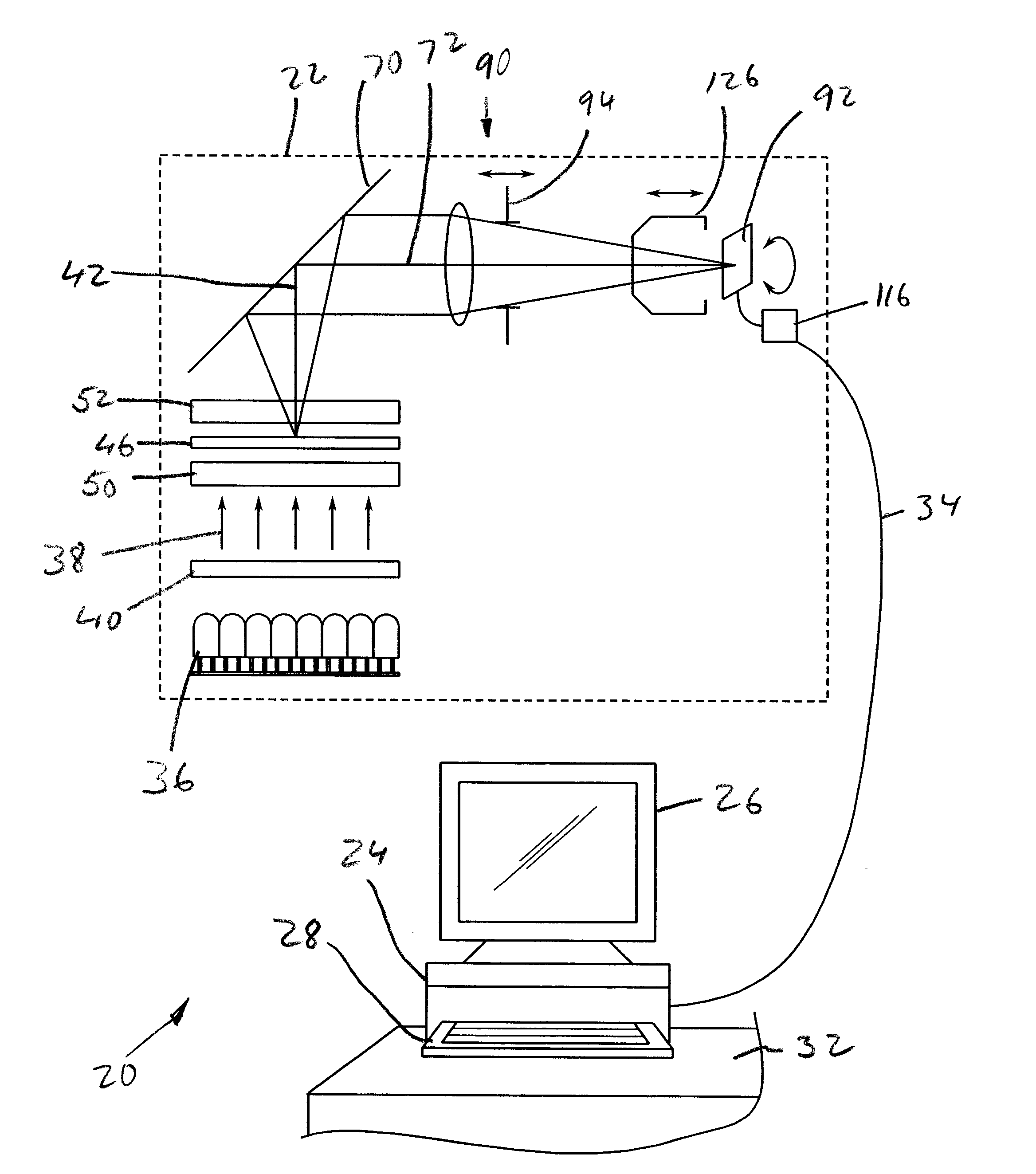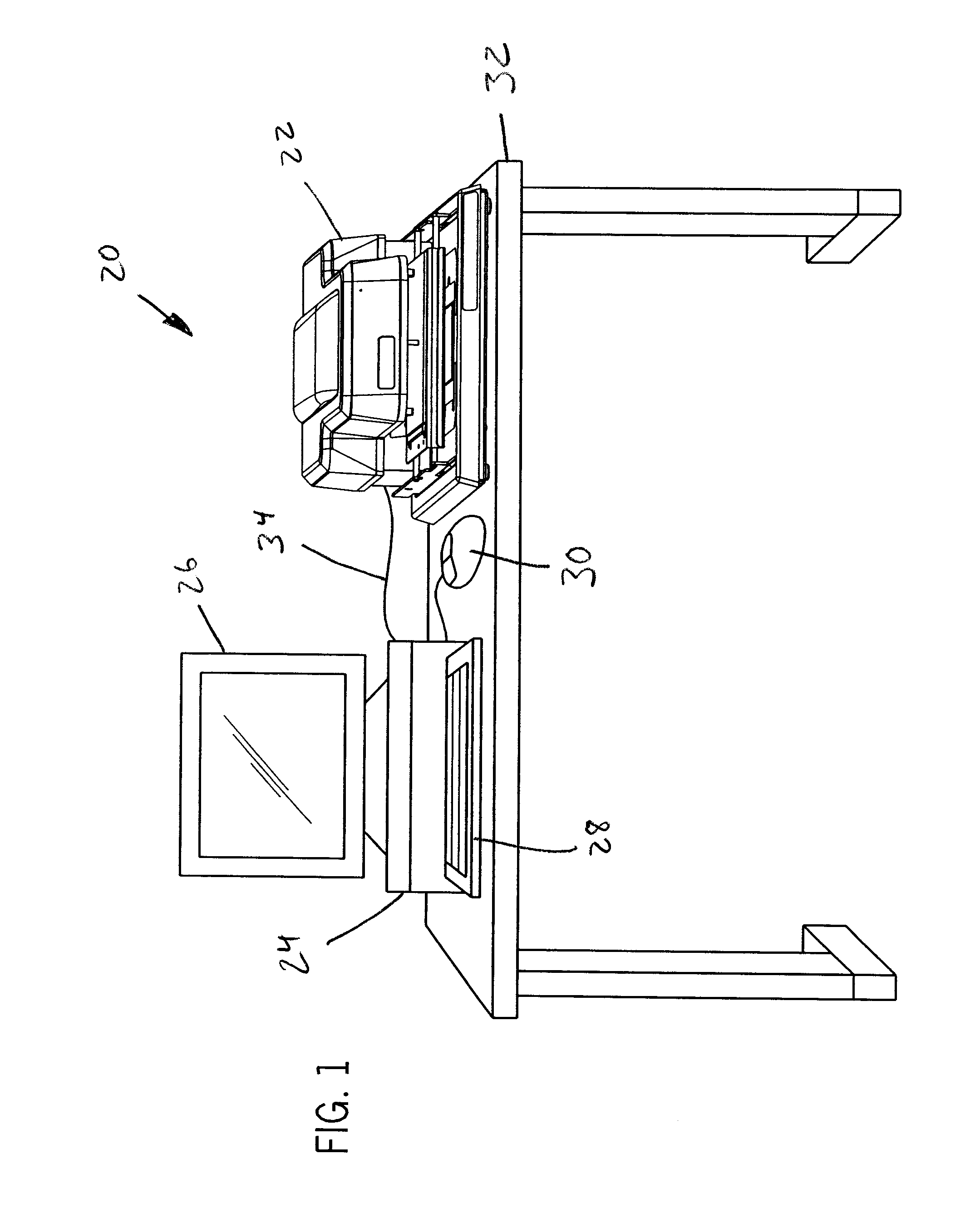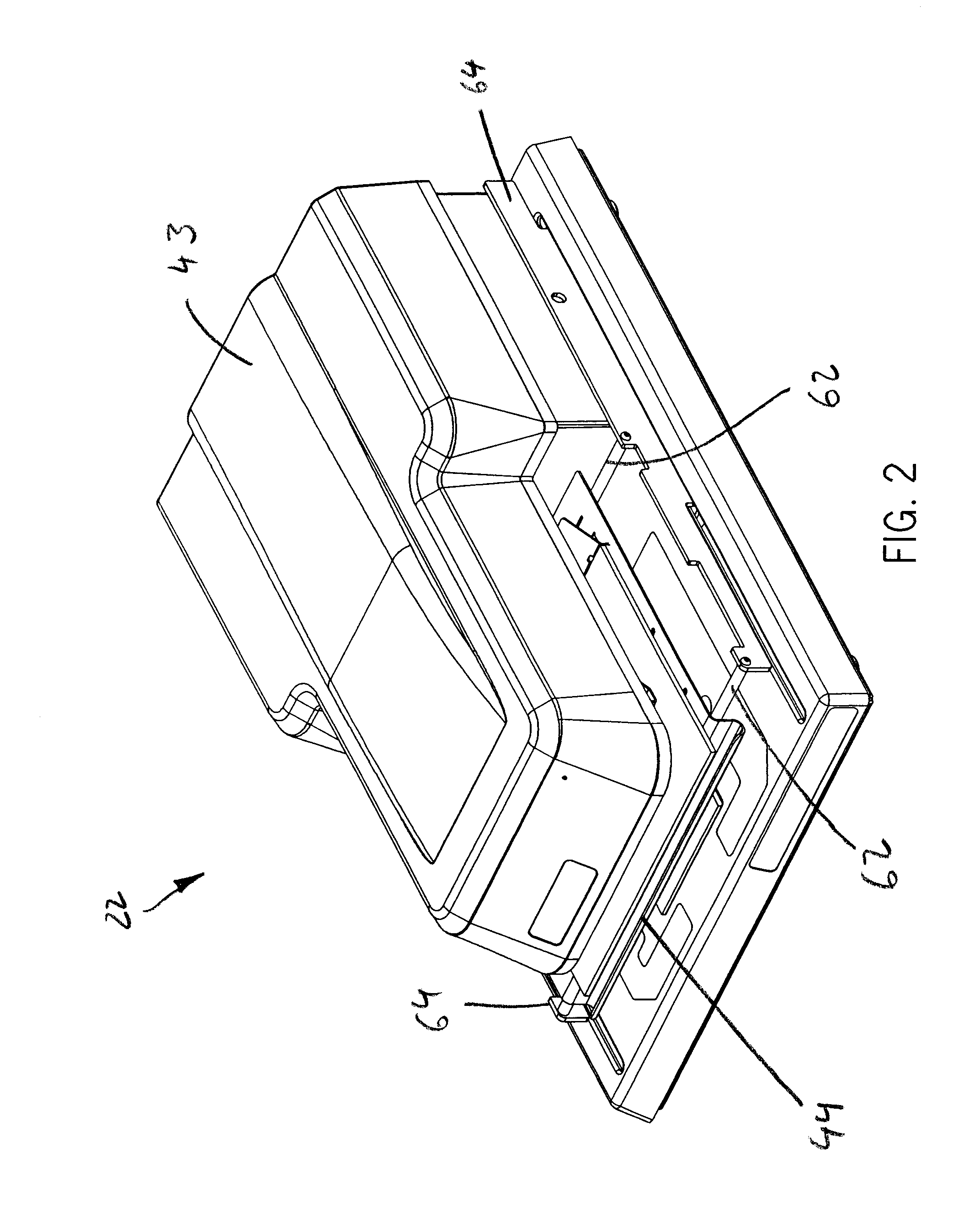Digital Microform Imaging Apparatus
a microform imaging and digital technology, applied in the field of digital microform imaging apparatus, can solve the problems of inability to modify the user to accommodate a the optical system is enclosed and relatively fixed, and the reduction ratio range of device microfilm readers is still difficult to accommodate. the problem of a relatively large range of reduction ratios for film images, and achieves the effect of high resolution scans, low energy consumption, and short tim
- Summary
- Abstract
- Description
- Claims
- Application Information
AI Technical Summary
Benefits of technology
Problems solved by technology
Method used
Image
Examples
Embodiment Construction
[0035]Referring now to the drawings, and more particularly to FIG. 1, there is shown a digital microform imaging system 20 which generally includes digital microform imaging apparatus (DMIA) 22 connected to a computer 24. Computer 24 can include one or more displays 26, and user input devices such as a keyboard 28 and mouse 30. DMIA 22 and computer 24 can be placed on a worksurface 32 of a desk, or other worksurfaces, for convenient access and ease of use. DMIA 22 can be electrically connected to computer 24 via cable 34, which may provide communication using a FireWire IEEE 1394 standard, for example.
[0036]Computer 24 can be connected to a printer (not shown) or connected / networked to other computers or peripheral devices (also not shown) to print, store or otherwise convey images produced by DMIA 22. Although cable 34 is described as an electrical type cable, alternatively DMIA 22 and computer 24 can communicate via fiber optics, or wirelessly through infrared or radio frequencies...
PUM
 Login to View More
Login to View More Abstract
Description
Claims
Application Information
 Login to View More
Login to View More - R&D
- Intellectual Property
- Life Sciences
- Materials
- Tech Scout
- Unparalleled Data Quality
- Higher Quality Content
- 60% Fewer Hallucinations
Browse by: Latest US Patents, China's latest patents, Technical Efficacy Thesaurus, Application Domain, Technology Topic, Popular Technical Reports.
© 2025 PatSnap. All rights reserved.Legal|Privacy policy|Modern Slavery Act Transparency Statement|Sitemap|About US| Contact US: help@patsnap.com



